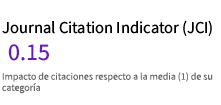Ways of Life in the Dreams of the City. Or How Architecture Becomes the Shepherd of the Collective Imagery
DOI:
https://doi.org/10.24310/BoLArte.2021.vi42.8029Keywords:
Dream, Life Forms, Antropomorphism, Architecture, Neoliberalism, Collective imaginaryAbstract
Analysis of the contemporary city and architecture from the notion of «dreaming» is uncommon. However, in the history of architecture a thorough search detects a whole battery of non-metaphoric symptoms of sleep, sharing the stage with the neoliberalism action that induces desires in societies as religion has done in history. Humans, who share this scenario with other, not human, beings become docile and their problems no longer derive from their attitudes, but in turn, have their own, intractable «life». To express how architecture becomes the herdsman of the collective imagery, the article argues that architects are no longer demiurges or puppets, as Lefebvre intimated. They are the shepherds of this religion of individual dreams dreamt by the city that in turn dreams, as an independent form of life, about the way of life of its inhabitants.
Downloads
Metrics
References
AUER, John (1953), City that never sleeps, Republic Pictures, Los Angeles.
AZÚA, Félix de (2015), La Invención de Caín, Debate (Penguin Random House Grupo Editorial España), Madrid.
BERGER, John (2015), «Why look at animals?», en BERGER, John, About Looking, Bloomsbury Publishing, Londres, pp. 3-28.
BOYARSKY, Alvin (1968), «Chicago à la carte, The City as an Energy System», AD, n.º 10, pp. 10-48.
BRENNER, Neil y THEODORE, Nick (2002), «Cities and the Geographies of ’Actually Existing Neoliberalism’», Antipode, n.º 34, pp. 349-379.
CARTWRIGHT, Rosalyn (2012), The twenty-four hour mind: the role of sleep and dreaming in our emotional lives, Oxford University Press, Nueva York y Oxford.
CASTRO NOGUEIRA, Luis (1997), La risa del espacio: el imaginario espacio-temporal en la cultura contemporánea: una reflexión sociológica, Tecnos, Madrid.
CASTRO NOGUEIRA, Luis (1988), «El Espacio-tiempo social. Fragmentos de ontología Política», Archipiélago: Cuadernos de crítica de la cultura, n.o 34-35, pp. 40-46.
CRARY, John (2013), 24/7: Late Capitalism and the Ends of Sleep, Verso, Nueva York.
DELEUZE Gilles y GUATTARI, Felix (1998), El anti-edipo: capitalismo y esquizofrenia, Paidós, Barcelona.
DERRIDA, Jacques (2008), The animal that therefore I am, Fordham University Press, Nueva York.
FREUD, Sigmund y BRILL, Abrahan Arden (1997), The Interpretation of Dreams, Wordsworth Editions, Ware.
HEJDUK, John y SHKAPICH, Kim (1985), Mask of Medusa: works, 1947-1983, Rizzoli, Nueva York.
HOLLIS, Edward (2011), The Secret Lives of Buildings: From the Parthenon to the Vegas Strip in Thirteen Stories, Granta Publications, Londres.
KOOLHAAS, Remment (2014), Delirious New York: A Retroactive Manifesto for Manhattan, Monacelli Press, Nueva York.
KOOLHAAS, Remment, CHUNG, Chuihua Judy, INABA, Jeffrey y LEONG, Sze Tsung (eds.) (2001), Project on the City I: Great Leap Forward, Taschen, Köln.
KOROM, Joseph J. (2008), The American Skyscraper, 1850-1940: A Celebration of Height, Branden Books, Wellesley, MA.
LATOUR, Bruno (2007), Reassembling the social: an introduction to Actor-Network-Theory, Oxford Univ. Press, Oxford.
DESCOLA, Philippe (2008), «El tercer día. La primera sesión», en LATOUR, Bruno y GAGLIARDI, Pasquale (eds), Las atmósferas de la política: diálogo sobre la democracia, Universidad Complutense de Madrid, Madrid, pp. 179-204.
LEFEBVRE, Henri (2018), Hacia una arquitectura del placer. CIS, Centro de Investigaciones Sociológicas, Madrid.
LLINÀS, Josep (1997), «Día y noche», en LLINÀS, Josep, Josep Llinàs, Tanais Ediciones, S. A., Madrid, pp. 12-15.
MONEO, Rafael (2017), La vida de los edificios: la mezquita de Córdoba, la lonja de Sevilla y un carmen en Granada, Acantilado, Barcelona.
PRECIADO, Paul B. (2010), Pornotopía: arquitectura y sexualidad en Playboy durante la Guerra Fría, Anagrama, Barcelona.
SCHULZE, Franz y WINDHORST, Edward (2016), Ludwig Mies van der Rohe: una biografía crítica, Reverte, Barcelona.
SLOTERDIJK Peter y TURNER, Christopher (2018), What Happened in the Twentieth Century?: Towards a Critique of Extremist Reason, Wiley, Cambridge (UK).
STAHL, P. J. (ed.), GRANDVILLE, Jean-Jacques (il.) (1877), Public and Private Life of Animals, S. Low, Marston, Searle & Rivington, Londres.
TRÍAS, Eugenio (1997), El Artista y La Ciudad, Anagrama, Barcelona.
VENTURI, Robert y SCOTT BROWN, Denisse (2004), Architecture as signs and systems: for a mannerist time, Belknap Press of Harvard University Press, Cambridge, MA.
ŽIŽEK, Slavoj (2014), The Most Sublime Hysteric: Hegel with Lacan, Wiley, Londres.
ŽIŽEK, Slavoj (2020), «El coronavirus es un golpe al capitalismo a lo Kill Bill», en AMADEO, Pablo (ed.), Sopa de Wuhan. Pensamiento contemporáneo en tiempos de pandemias, Editorial ASPO [Aislamiento Social Preventivo y Obligatorio], Buenos Aires, pp. 21-28.
Downloads
Published
How to Cite
Issue
Section
License
Todos los contenidos publicados en la revista Boletín de Arte están sujetos a la licencia Creative Commons Reconocimento-NoComercia-Compartirigual 4.0 cuyo texto completo puede consultar en <http://creativecommons.org/licenses/by-nc-sa/4.0>

Los/as autores/as cuyas contribuciones sean aceptadas para su publicación en esta revista conservarán el derecho no exclusivo de utilizar sus contribuciones con fines académicos, de investigación y educativos, incluyendo el auto-archivo o depósito en repositorios de acceso abierto de cualquier tipo.
La edición electrónica de esta revista esta editada por la Editorial de la Universidad de Málaga (UmaEditorial), siendo necesario citar la procedencia en cualquier reproducción parcial o total.











4.png)
